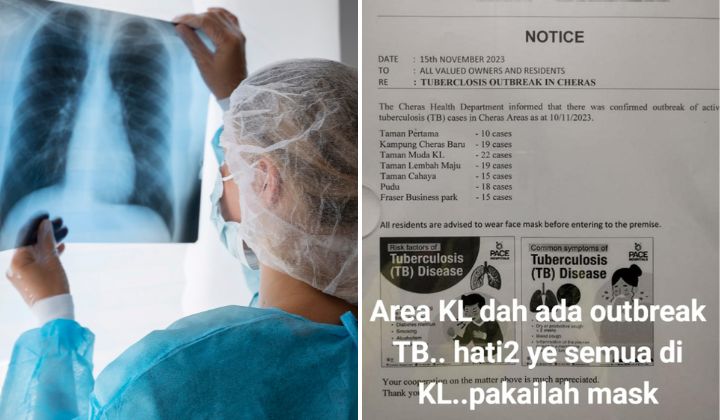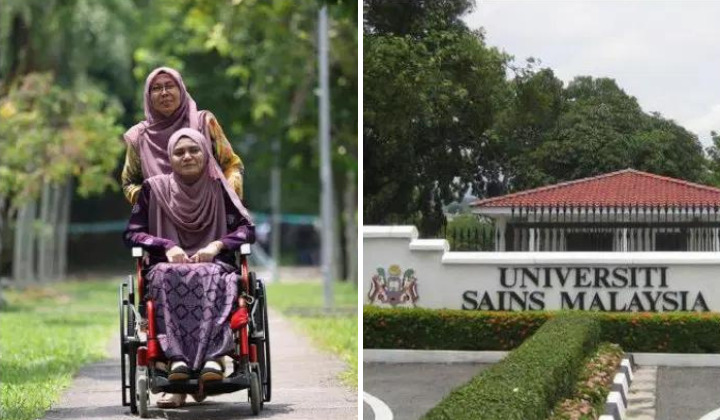Why Are There Fewer People With BCG Scars? Is BCG Vaccine Still Given?
BCG scars serve as an indicator that one is vaccinated against tuberculosis (TB) but not everyone forms a scar after getting injected. What gives?

Subscribe to our FREE Newsletter, or Telegram and WhatsApp channels for the latest stories and updates.
Mention the word “BCG” and most Malaysians will recall (and probably shudder at the memory) the day they were jabbed with the vaccine in school and compare their BCG scars over the next few weeks.
BCG or Bacillus Calmette-Guerin is a vaccine for tuberculosis (TB), a disease caused by an infection from Mycobacterium tuberculosis.
TB was a global emergency in 1993 and was mainly thought of as a lung disease but it can affect other body parts such as the brain (TB meningitis) and the bloodstream (military TB).

According to the World Health Organisation, no country is TB-free but it’s endemic in most poor countries.
Malaysia’s National BCG Vaccination Program started in 1961. A routine vaccination is given to newborns at birth, considered the primary BCG vaccination. An additional booster dose is given to children at age seven in Sabah and twelve years old in other states in schools.
In July 2002, the program was modified and the booster dose was discontinued but it’s still given at birth. However, children without BCG scars or BCG vaccination history were given revaccinations, without a prior Tuberculin Skin Test (TST). TST tests for the presence of the bacterium that causes TB.
In summary, almost every Malaysian child and adult would have BCG scars and for some, it’s like a rite of passage.

Why are there fewer people with BCG scars these days?
BCG is no longer given routinely in some countries such as the United Kingdom and the United States because these countries have low risk of infection. The BCG vaccine is still available for select persons who meet specific criteria after a consultation with a TB expert.
However, TB is still endemic in Malaysia so the BCG vaccine is still given at birth to ensure maximum protection. The second BCG shot is given in school at Standard 1 if no scar is present, as part of the Expanded Programme of Immunization (EPI).
What’s with the BCG scar?
The BCG vaccine is typically injected into the left arm via intradermal injection, injecting the vaccine into the top skin layer.
After the injection, a small swelling usually develops over or near the injection point and disappears within a day.

A swelling resembling a mosquito bite will reappear after 6 to 8 weeks. This swelling will grow in size and form a nodule that will break open and discharge fluid.
After this, an ulcer remains and forms a scar when it heals. The lifetime BCG scar serves as a common indicator that a person has been vaccinated against TB.
But what if I didn’t have a scar? Does it mean it didn’t work?
Not everyone vaccinated against TB develops a scar and not having a scar doesn’t mean they have not developed an immune response against TB.
A research paper titled ‘Absence of Scar Formation in Infants after BCG Vaccination’ showed a prevalence varying from 1% to 20% of infants not having a scar after BCG vaccination.
This is due to various factors such as the strain of BCG vaccine, injected dose, injection technique, vaccine quality, improper vaccine storage, and underlying undiagnosed immunological disorders in infants.
Another study titled ‘Scar formation and tuberculin conversion following BCG vaccination in infants: A prospective cohort study’ showed that infants with low birth weight have a 55% higher scar failure rate.
The scar size is usually related to the dose and strain of the BCG vaccine, with the mean scar size measuring 4.93mm. That being said, a larger scar does not indicate whether the person developed better immunity.
Since it’s clinically impossible to tell between a failed vaccination and failure to develop a scar despite an immune response, those without a BCG scar are often advised to get another BCG jab if a doctor recommends it.
How to remove the BCG scar?
The look of BCG scars varies with some not as visible if the scars are lighter or smaller in size. For some, the scar may be larger or darker in colour and they may want to seek solutions to remove it or reduce its appearance.
The BCG scar is known as a keloid (a raised scar) and dermatologists usually recommend a laser treatment to reduce the look of the scar.
Another solution shared by Dr Lim Ing Kien, better known as Dr Ingky on social media, is injecting 5-fluorouracil which can help flatten the scar.
@dr_ingky Nak rawatkan keloid? Whatsapp +60176036088 #keloid #tiktokguru #kekalsihat ♬ Funny video "Carmen Prelude" Arranging weakness(836530) – yo suzuki(akisai)
According to The Straits Times, researchers from the National Skin Centre (NSC) developed a near-painless, micro-needle patch to shrink keloid scars.
This is an alternative for those who don’t want to put up with the painful monthly injections. The micro-needles contain a steroid called triamcinolone.
As it’s a medical procedure, it’s best to consult a certified dermatologist or aesthetic physician to discuss options.
Share your thoughts with us via TRP’s Facebook, Twitter, Instagram, or Threads.





